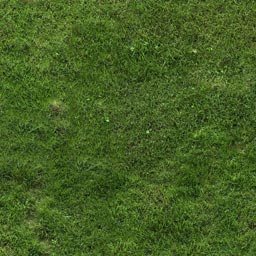Bidmap Texture Of Material Not Showing In Render (toucan)
I wondered if any of you guys could help me? I have been having problems with the bump/displace with vray for sketchup. Basically, I have been trying to render an old flint stone wall.
I have the right texture and bump map (well i think I do!) but the bump and displace tools are unresponsive. When I render the texture in the preview pane, it looks fine but when I render it in the model it does not work accordingly.
I have used bump maps elsewhere in the model for textures such as concrete and wood which seem to have worked fine. Macx youtube downloader 4.1 0 for mac serial. I am not sure if I even need displace but as I cannot get anything to work, I have not been able to test it to find out; bump may be all I need for this.? My method is: 1. Rename a existing sketchup material in the standard materials editor. Add my texture and resize. Go to vray material editor and choose 'create new linkedmtl' 4.
Choose material 4. Add bump map as bitmap 5.
In my materials dialog, I assign a Acoustic Ceiling Tile bitmap to the material, but when I render it, it just shows a white luminous surface (I added a bit of illuminousity to it). I thought that might be the problem, but I am also having the same problem with my sheet vinyl flooring bitmap not showing up.
Render I have attached pictures of my scene and settings (with bump map configuration & preview. Disp is switched off). Any help would be fantastic!
Bitmap Texture Of Material Not Showing In Render (toucan)
First of; I'd recommend you look into updating your VfSU to the latest version. In the latest version all materials are automatically linked. Displacement: You have to isolate all geometry that you want to displace. If the group/component contains any other material other than the displacement material it won't displace. Controlling the depth of the displacement: You can't trust the material preview. It's UV mapping size doesn't relate to the one you have in SU. When you want to set the depth of the displacement use the multiplier control of the displacement map to set the depth.
1 unit = 1 inch (Always! Doesn't matter what you've set your model units to be, it'll always use inches.
That goes for pretty much all the V-Ray scene units.). Ok great, ill give that a go, can it still be touching another surface as long as it is still in a group of its own?
Is v.1.00.74 the latest version? Also, (i hope i'm not asking too much?!) I need to make some sea water for the same scene (i know it's a strange one!) this is the best I have achieved so far. I managed to find a fairly decent rough sea mesh which i put a water material i made myself onto. It is a fairly straight forward glass-like material with a water bump map.
AS you can see, it is not very realistic; do you have any pointers? Afrotekno wrote:is v.1.00.74 the latest version? The latest version is 1.05.30. Mind you, if you're in the middle of some projects you might want to hold of an upgrade until you're done. There is some changes made which requires you to make adjustments to your scenes. For sea river water like that I make a material with a very dark diffuse colour. (very dark blue/green - nearly black) Then I add a reflection layer and a bump map.

I did that with one of my first renders I did; There is one thing though, the bump map needs UV mapping. If you don't have a SU texture to size it, V-Ray will assume it's 1'x1'. So you might want to make it easier and make a texture with the dark diffuse colour so you can control the bump map. Ebraahim wrote:hi guys when u dont have a su texture to size it, how u guys add bump map to it? I use the bump map as my texture and reduce the color mutiplier to 0.01 becuz its not possible to change diffuse color seperately from its texture how you do that?
Set a texture in your diffues, as you say you do, then add an white TexAColor map to the transparency slot. That will make that layer invisible when rendering, but still visible in SketchUp. Then you add a second diffuse layer underneath with just a plain colour - this layer is what you'll see when you render. (Note that you use a TexAColor map type in the transparancy slow - no just setting the colour.).
Comments are closed.